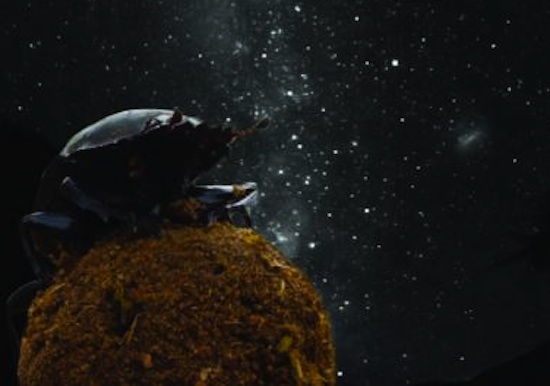Dung Beetles Know Where to Roll Their Dung Balls by Watching the Stars, Milky Way
Oscar Wilde famously wrote “We are all in the gutter, but some of us are looking at the stars,” and it turns out he might have really hit the nail on the head. After all, you don’t get much more in the gutter than dung beetles, a species of insect famed for making balls of other animals droppings, and it turns out those humble creatures are avid stargazers. In fact, without a night sky and the Milky Way above them, the insects seem to get lost and are unable to move in a straight line.
That’s according to a study this week in the journal Current Biology, which found that dung beetles under a clear night sky were able to roll the balls of dung they take their names from in a straight line. When they were put inside, though, the animals seemingly became confused, taking a more meandering, aimless path. So, in an effort to learn whether or not the bugs were using the night sky to navigate, like some birds and mammals — humans included — are known to, they took a few of the beetles on a field trip to the planetarium.
In the dark of the planetarium, the team’s hunch was borne out and even expanded on. Beetles in a fully dark room couldn’t tell where they were going, while those placed under an approximation of the night sky were able to orient themselves in a straight line. Interestingly enough, the beetles were just as good navigating under a full recreation of the sky, or one that only showed the Milky Way, suggesting that that silver streak in the sky is what they were using to navigate by — much the same way that sailors oriented themselves by the North Star. While it may seem strange, that actually might make sense, as the Milky Way would be one of the rare features of the sky that is strong enough for the beetles’ poor eyesight to pick out.
While researchers believe this is the first time an insect has been seen to tell its way by celestial navigation, they suspect it won’t be the last instance of the behavior in nocturnal creepy crawlers.
(via Current Biology)
- This giant weta is simply too much bug
- Sometimes, if you want to discover a new insect, you have to go to flickr
- Dragonflies can change what they’re paying attention to on the fly
Have a tip we should know? tips@themarysue.com
